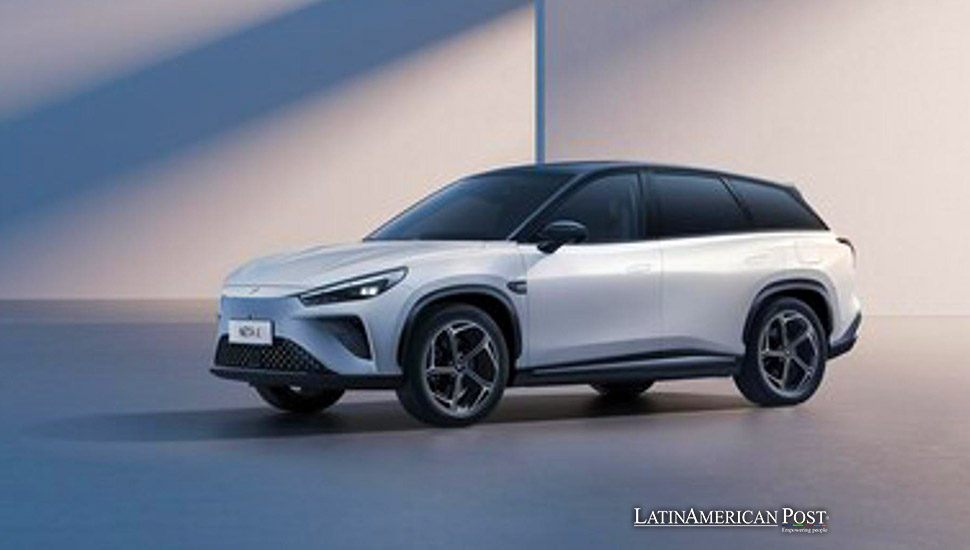Chinese Cars Transform the Automotive Market in Latin America

Millions of Latin American car buyers have shifted from U.S. and Brazilian-built vehicles to Chinese models, driven by affordability, quality, and the emergence of electric cars. This trend is reshaping the region’s automotive industry and broader economic landscape.
Millions of car buyers in Latin America have transitioned from U.S. and Brazilian-built vehicles to Chinese models in recent years. This shift, marked by a significant increase in sales, highlights the growing influence of Chinese car manufacturers in the region. In 2019, Chinese car sales in Latin America amounted to $2.2 billion. By 2023, this figure had soared to $8.5 billion, according to the International Trade Center (ITC), a United Nations agency.
Chinese car sales now represent 20 percent of the total automotive market in Latin America in terms of value, surpassing both the United States, with 17 percent, and Brazil, with 11 percent. This makes Latin America the largest market for Chinese cars outside of Asia, reflecting a broader global trend of Chinese automotive expansion.
The growth of Chinese car sales in Latin America is not just a story of numbers; it reflects a broader economic shift. As China’s economic and technological prowess continues to rise, its influence is felt across various sectors globally, with the automotive industry being a key impact area. For many Latin Americans, particularly those in the middle- and low-income brackets, Chinese cars offer a more affordable alternative without sacrificing quality. This affordability has allowed many to purchase their first vehicle, a significant milestone in a region where car ownership is often a marker of economic progress.
Electric Vehicles: A Chinese Dominance
While Chinese cars are gaining ground in the traditional automotive market, their dominance is even more pronounced in the emerging electric vehicles (EVs). In Latin America, Chinese manufacturers account for 51 percent of all EV sales, underscoring their leadership in this burgeoning sector.
One area where this dominance is particularly evident is in electric buses. Almost all electric buses operating in Latin American cities are manufactured in China. This significantly impacts the region’s transportation infrastructure, particularly in densely populated and polluted metropolises like Santiago, Bogotá, and Mexico City. Introducing electric buses is crucial in reducing urban air pollution and improving public health.
Chinese carmakers have capitalized on the region’s growing demand for cleaner and more sustainable modes of transport by offering competitively priced electric vehicles. These vehicles, which often come with advanced features and robust build quality, have made significant inroads in markets where affordability and environmental concerns are increasingly prioritized. Moreover, the lack of protective import tariffs in many Latin American countries, unlike in the U.S. and Europe, has facilitated the entry of Chinese EVs into the market.
Latin America’s Automotive Landscape Shifts
The shift towards Chinese cars is not confined to one part of Latin America. In Chile, for example, where import duties are near zero, Chinese models accounted for nearly 30 percent of car sales last year. This trend is echoed in Mexico and Brazil, Latin America’s two largest car producers, where Chinese manufacturers are steadily gaining market share.
In Brazil, the presence of Chinese automotive giant BYD (Build Your Dreams) is particularly noteworthy. BYD is constructing its largest electric car manufacturing plant outside of Asia in Camacari, located in northeastern Brazil. The plant is expected to have a capacity of 150,000 units per year, signaling China’s long-term commitment to establishing a solid foothold in the Latin American market.
This growing presence of Chinese automakers is causing a significant shift in the region’s automotive landscape. Traditionally, the automotive industry in Latin America has been dominated by U.S. and European manufacturers, with Brazil and Mexico serving as significant production hubs. However, the influx of Chinese vehicles is challenging the status quo, offering consumers more choices and driving competition in the market.
Economic and Environmental Impacts
The rise of Chinese cars in Latin America profoundly impacts the economy and the environment. Economically, the availability of affordable Chinese vehicles has made car ownership accessible to a broader segment of the population. For many middle—and low-income families, owning a car was previously out of reach due to the high cost of vehicles from U.S., European, or local manufacturers. With their lower price points and competitive features, Chinese cars have bridged this gap, enabling more people to enter the automotive market.
Moreover, establishing Chinese manufacturing plants, like BYD’s facility in Brazil, contributes to local job creation and economic development. These plants produce vehicles for the domestic market and position Latin America as a potential export hub for Chinese cars, further integrating the region into global supply chains.
From an environmental perspective, the proliferation of Chinese electric vehicles, particularly buses, is crucial in reducing greenhouse gas emissions and improving air quality in Latin America’s urban centers. Cities like Santiago, Bogotá, and Mexico City suffer from severe air pollution and see tangible benefits from adopting electric buses. These benefits include reduced reliance on fossil fuels, lower emissions, and improved public health outcomes.
Introducing cleaner engine technologies in the region’s transportation sector aligns with global efforts to combat climate change. Latin America’s adoption of Chinese electric vehicles demonstrates the region’s commitment to sustainable development, even as it grapples with economic challenges.
Also read: Social Media Giant X Closes Operations in Brazil Over Censorship Dispute
The surge in Chinese car sales in Latin America represents a significant shift in the region’s automotive market. This trend, driven by affordability, quality, and the rise of electric vehicles, is reshaping the economic and environmental landscape. As Chinese manufacturers continue to expand their presence in the region, the future of Latin America’s automotive industry will likely be defined by this growing influence. Whether this trend will lead to long-term benefits for the region’s economy and environment remains to be seen, but for now, Chinese cars are here to stay.




